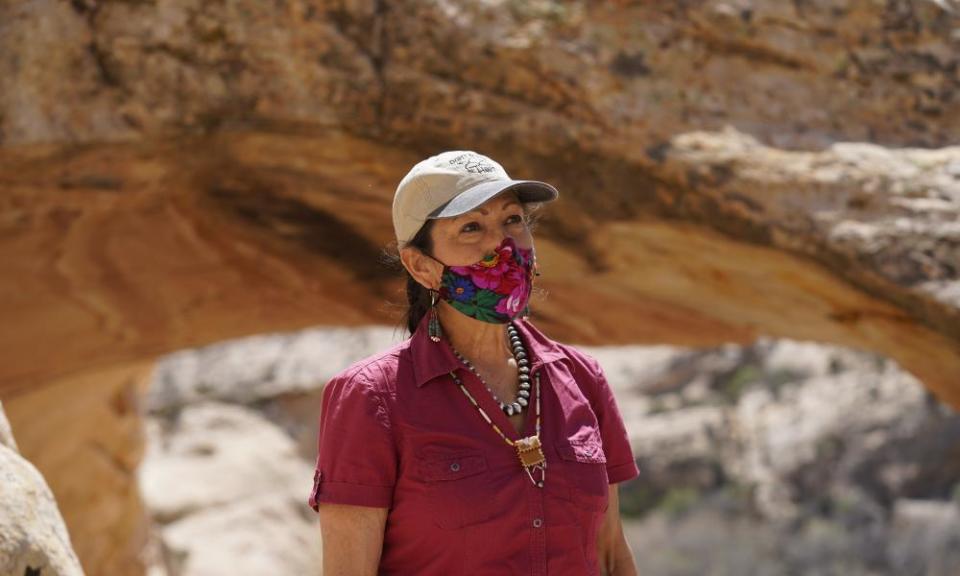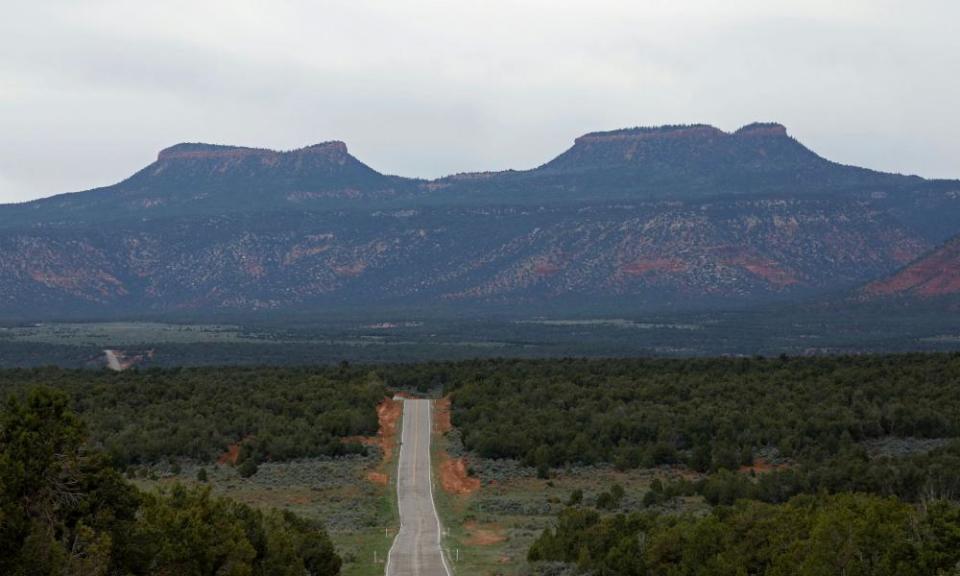Reverse Trump’s cuts to monument protections, Haaland asks Biden

It was one of Donald Trump’s most provocative environmental decisions. After a year in office, he angered preservationists and Native American tribes and ordered that two treasured national monuments be dramatically reduced in size.
The areas falling outside the diminished monuments, both expanses of rocky outcroppings dense with archaeological artifacts in Utah, lost environmental protections. A few years later, he also ordered that commercial fishing be allowed in a marine preserve off the coast of New England.
Now the fate of those monuments appears to be coming full circle. The US interior secretary, Deb Haaland, on Tuesday recommended that Joe Biden restore their former size and protections, the Washington Post first reported.
Related: The Everglades are dying. An alliance between Biden and Republicans could save them
Haaland’s decision comes as little surprise. In 2019, Haaland, who is a member of the Laguna Pueblo and the first Indigenous cabinet member, described the wonder of the shrunken Bears Ears national monument in Utah in an interview with the Guardian: “There are some pretty amazing ruins there, and you know, I don’t even like to call them ruins,” she said, “because in our culture, in Pueblo culture, if you acknowledge our ancestors, they are there. The spirit of the people never leaves.”
It isn’t yet clear if Biden will follow Haaland’s recommendations, but during his presidential campaign he pledged to restore Utah’s monuments.

Bears Ears is named for a pair of buttes that dominate much of the landscape of south-east Utah, and is the site of ancient cliff dwellings and sacred burial grounds. It is the ancestral homeland of five local native tribes – the Navajo Nation, Hopi Tribe, Ute Indian Tribe, Ute Mountain Ute Tribe and Pueblo of Zuni. More than 100,000 archeological sites are protected within the monument.
“President Trump’s actions left the Bears Ears landscape with all of its history, beauty and resources incredibly vulnerable to vandalism and extraction industries,” said Matthew Campbell, a staff attorney with the Native American Rights Fund.
Keala Carter, an advocate and public lands specialist with the Bears Ears Inter-Tribal Coalition, said that “after a four-and-a-half-year delay, we are eager to begin collaboratively managing this remarkable yet imperiled landscape. Amidst all of the controversy and politics, Bears Ears has been without a comprehensive management plan. The buttes have stood silently waiting for a resolution.”
Barack Obama declared Bears Ears a national monument in 2016, setting aside more than 1.3m acres. Grand Staircase-Escalante was established in 1996 by Bill Clinton, at nearly 1.9m acres.
It later emerged that the Trump administration’s decision on Bears Ears centered on gaining access to oil and gas reserves within the monument. It was subsequently overrun by motorized vehicles and tourists, threatening the archaeological and cultural artifacts that helped bolster its renown.
Haaland’s move was confirmed by the Utah governor, Spencer Cox, on Monday, who said he was “disappointed” by Haaland’s reported recommendation. There will probably be significant opposition from locals who say successive administration have rode roughshod over their wishes with proclamations from distant Washington DC.

 Yahoo Finance
Yahoo Finance 